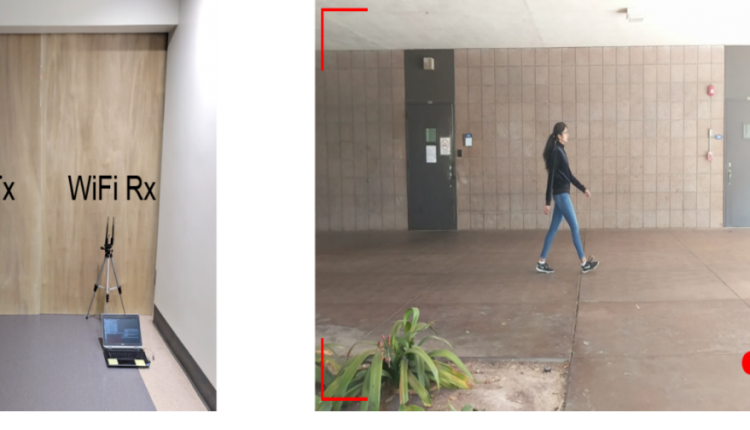Public spaces and even private homes may be better protected from one specific security threat with the advent of a new technology that uses WiFi transceivers to identify individuals behind solid walls.
Researchers in the lab of University of California – Santa Barbara professor Yasamin Mostofi have developed the new technology, called XModal-ID, pronounced Cross-Modal-ID. It is a video-WiFi cross-modal gait-based person identification system, which can determine if a person in a video is the same person behind a wall.
For instance, if law enforcement has video footage of a robbery, say from a video doorbell and camera outside the home, they can use the XModal-ID to determine if the person is still inside the house.
In the team’s experiments, one WiFi transmitter and one WiFi receiver are behind walls, outside a room where a person is walking. The transmitter sends a wireless signal whose received power is measured by the receiver. Then, given video footage of a person from another area — and by using only such received wireless power measurements — the receiver can determine whether the person behind the wall is the same person seen in the video footage.
This innovation builds on previous work in the Mostofi Lab, which has pioneered sensing with everyday radio frequency signals such as WiFi since 2009. The XModal-ID translates the video gait content, which is unique to an individual, to the gate detected by the WiFi signals.
Given some video footage, the team first utilized a human mesh recovery algorithm to extract the 3D mesh describing the outer surface of the human body as a function of time. They then used Born electromagnetic wave approximation to simulate the RF signal that would have been generated if this person was walking in a WiFi area.
Next, they employed their time-frequency processing approach to extract key gait features from both the real WiFi signal (that was measured behind the wall) and the video-based simulated signal. The two signals were then compared to determine if the person in the WiFi area was the same person in the video.
The researchers’ processing pipeline involved a series of mathematical functions, including Short-time Fourier transform and Hermite functions, in order to get the spectrogram of the received signal.
Several important gait features are then extracted from both spectrograms and properly compared to declare if the person in the video is behind the wall.
The lab has tested their new technology on 1,488 WiFi-video pairs, drawn from a pool of eight people, and in three different behind-wall areas, and achieved an overall accuracy of 84% when it came to correctly identifying the person behind the wall.

